Saturday, May 14, 2011
Wednesday, April 6, 2011
Red Jungle fowls




Red Junglefowls to the Hmong
For the Hmong, the red junglefowl is a symbol of peace, harmony, and freedom. It represents their past experiences living in their homelands of the mountainous regions of Southeast Asia and surviving off the fat of the land. Similarly to the Hmong, red junglefowls live freely and roam effortlessly through the jungles. During late winter, spring, and early summer months, the crow of the red junglefowls could often be heard echoing through the jungles and thick bamboo groves while the Hmong carried about their daily lives.Red Jungle Fowls As Song Birds
Now torn away from their homelands, many Hmong are drawn to the red junglefowl for its crows. The crow of red junglefowls have reminiscent qualities of the old times and are a nostalgic reminder of how and where they once lived and of memories of past family members that may not have escaped the war burdened countries.Red Junglefowls As Companions
Analogous to the dog being the Western man's best friend, in Southeast Asia, a red jungle fowl is a Hmong man's best friend. Legions of Hmong men identify with these birds as virtually all Hmong males of appropriate age hunted wild red junglefowls with domesticated junglefowl decoys called "qaib dib" or "call birds." These chosen "qaib dib" were hand-picked for their crowing abilities based on their rhythm, pitch, timbre, and note lengths being similar to the wild birds. "Qaib dib" were tamed via countless hours of hand held attention and being carried in cylindrical carriers woven from bamboo, taught to stay on on branches and not fly off, and trained to crow on their owner's cue. Once trained, "qaib dib" were carried into the jungles and used to lure territorial wild red junglefowls out during breeding seasons. Additionally, the crows of the "qaib dib" were used to entice large game animals out of hiding as the crow of a wild red junglefowl was seen as a signal that the jungle was free of dangers.
The art of training one's bird was and is still passed down from generation to generation in the Hmong culture. Children as young as toddlers are still seen carrying their "qaib dib" and practicing to one day be a master red junglefowl hunter. To the Hmong, junglefowls not only served as a valuable source of much needed protein when the times were tough, but they were also seen as a companion as their calls were literally and figuratively viewed as a sign of tranquility.
Qaib Hmong
Qaib Hmong or
Hmoob Qaib Xiav Nqaij
Offspring of above Dark Skin Brood
Photographer: Yong Moua
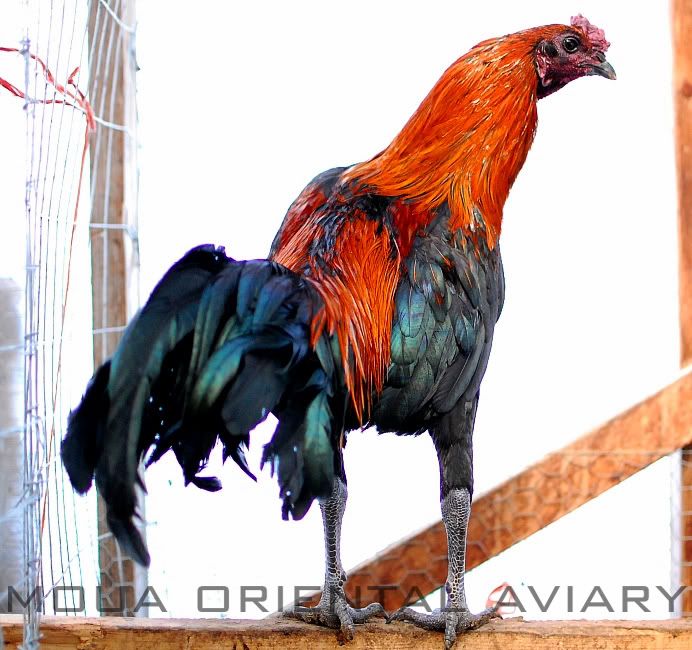
Hmoob Qaib Xiav Nqaij
Offspring of above Dark Skin Brood
Photographer: Yong Moua

Asil Breed
Viet Nam, home of Gà Nòi
The origin of gà nòi is unknown. Its history cannot be traced due to the lack of documentation. The 30 years civil war ended in 1975 that killed millions and ruined the whole country further contributed to the lack of information.
Cockfighting in Viet Nam is an old tradition dating back at least 700 years. Gà Nòi is believed to be native of Viet Nam as there is no credible evidence of its origination from elsewhere. Gà nòi have been exported to neighboring countries such as Thailand, Indonesia, and Malaysia in recent decades. Vietnamese cockers living in the United States had also brought gà nòi to the States. Fowls bearing physical resemblance to ga noi can also be found in the Reunion Island.
For people who are interested in researching the origin of ga noi, a recent study conducted by a Japanese team on the origin of all chickens in the world can be found at www.accessexcellence.org. The new findings by the Japanese researchers suggest that domestication took place more than 8,000 years ago in what is now Thailand and Vietnam, the region in which the red jungle fowl is found today. You can click on this PROTOCHICKEN link to read more about the study.
Definition
Cockfighting in Viet Nam is an old tradition dating back at least 700 years. Gà Nòi is believed to be native of Viet Nam as there is no credible evidence of its origination from elsewhere. Gà nòi have been exported to neighboring countries such as Thailand, Indonesia, and Malaysia in recent decades. Vietnamese cockers living in the United States had also brought gà nòi to the States. Fowls bearing physical resemblance to ga noi can also be found in the Reunion Island.
For people who are interested in researching the origin of ga noi, a recent study conducted by a Japanese team on the origin of all chickens in the world can be found at www.accessexcellence.org. The new findings by the Japanese researchers suggest that domestication took place more than 8,000 years ago in what is now Thailand and Vietnam, the region in which the red jungle fowl is found today. You can click on this PROTOCHICKEN link to read more about the study.
Definition
According to "Đại Nam Quốc Âm Tự Vị" a linguistic research book in Vietnamese language, published by a scholar named Huỳnh Tịnh Của (Volume II, in 1896 - page 155), the word "Nòi" means:
Nòi = bloodline, breed. (Vietnamese writing uses diacritical mark)
Gà Nòi = A special type of chicken people breed for fighting purpose.Rặt Nòi (entirely nòi) = A pure breed, no cross-breeding with the unknown type
Vương Hồng Sển, a respected author who told stories of cockfighting in 1915 in his book "Phong Lưu Cũ Mới", published in 1961, gave another definition of "Nòi" as:Race
Nòi = bloodline, breed. (Vietnamese writing uses diacritical mark)
Gà Nòi = A special type of chicken people breed for fighting purpose.Rặt Nòi (entirely nòi) = A pure breed, no cross-breeding with the unknown type
Vương Hồng Sển, a respected author who told stories of cockfighting in 1915 in his book "Phong Lưu Cũ Mới", published in 1961, gave another definition of "Nòi" as:Race
An ancestral line
A distinguish ancestry
A recorded purity of breed of an individual or strain
The DICTIONNAIRE ANNAMITE-FRANCAIS prepared and edited by G�nibrel, J-F-M published in 1898 also gave similar definition as above.
The term gà nòi refers to two separate breeds of fighting fowls. They are gà đòn (short for gà nòi đòn) and gà cựa (short for gà nòi cựa).
Đòn = hitting, whipping, caning, thrashing.Cựa = Spur
Article courtesy of www.ganoi.com
The term gà nòi refers to two separate breeds of fighting fowls. They are gà đòn (short for gà nòi đòn) and gà cựa (short for gà nòi cựa).
Đòn = hitting, whipping, caning, thrashing.Cựa = Spur
Article courtesy of www.ganoi.com
More information can be found on this wonderful, ancient breed at:
http://www.ganoi.com/ganoi.htmlPhotos below:
He is a five year old Gadon (2005) out of Vietnam imported stock. He is a true first generation Gadon and still breeding strong. 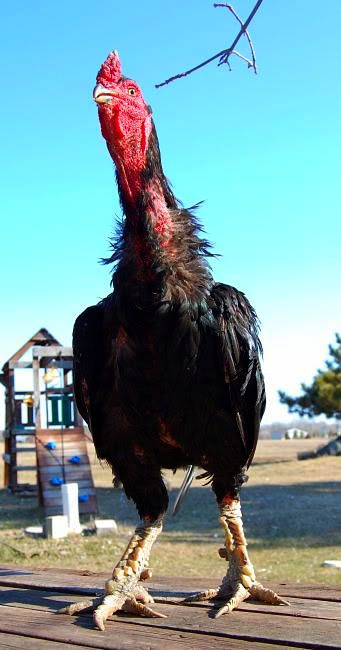
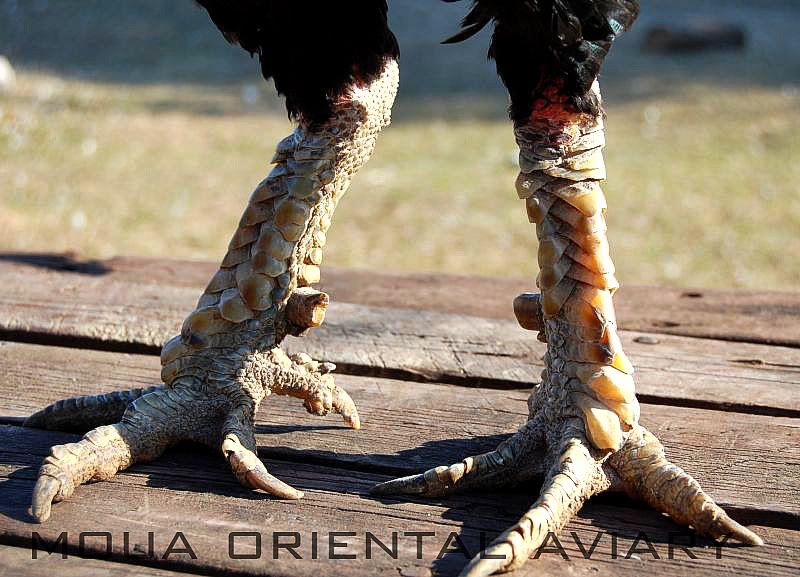
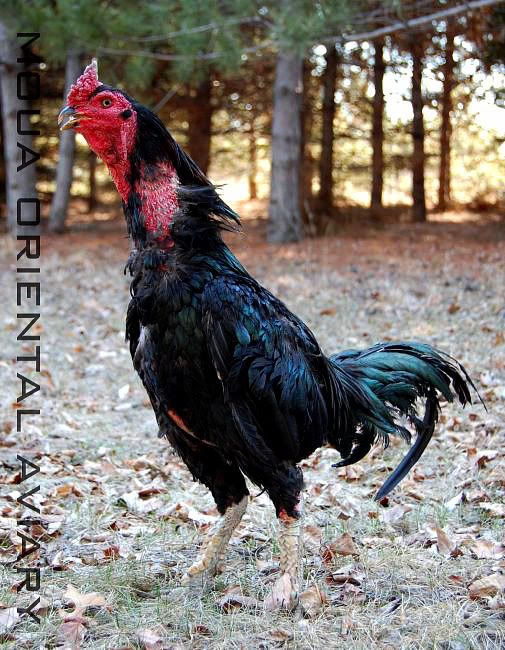
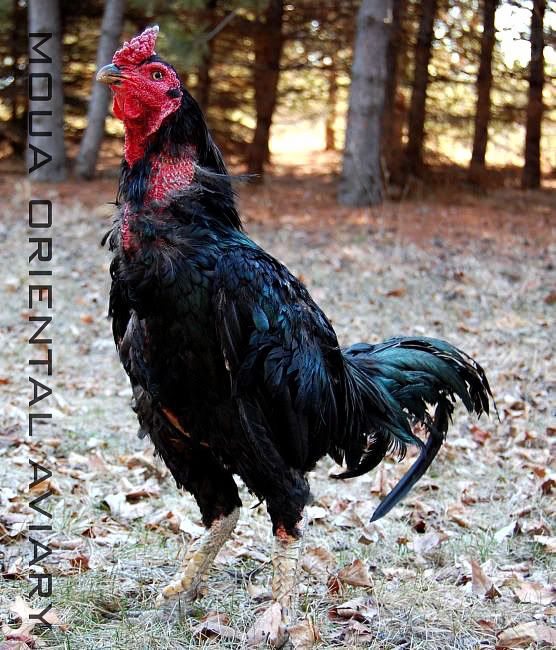
These are the 2009 offspring to the Gadon cock above. Their dam is a 2nd generation pure Gadon Hen. Majority of the stags have the same trait as their father: Large, dry, single ring shanks.
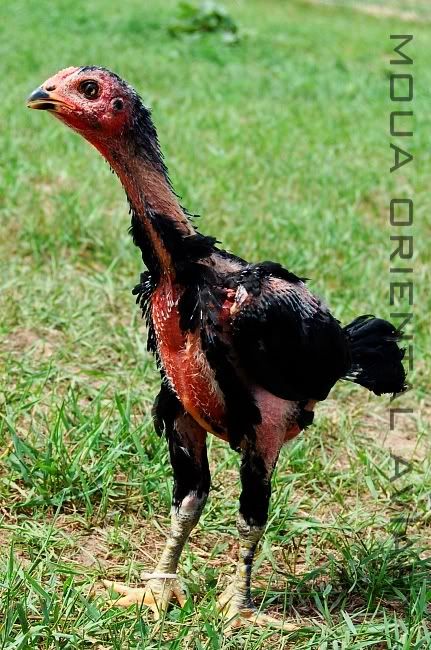
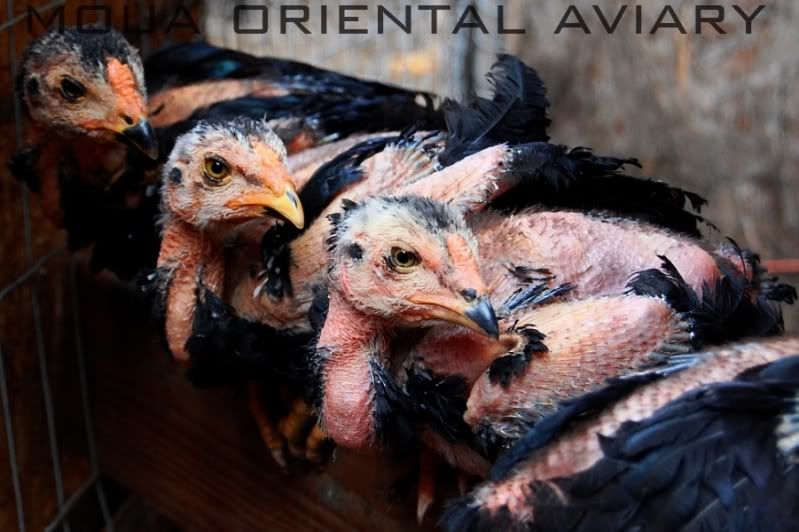
Shamo Breed



Shamo: Pure Japanese Line
The Shamo is a naked heel game bird from Japan.
The breed was originally brought into Japan from Thailand in the seventeenth century - the name referring to Siam, the old name for Thailand. In Japan it was developed into a distinctive fighting bird of courage and ferocity.
Its posture is very upright, with prominent shoulders, powerful bone structure, muscular build and sparse hard feather, which all together make it an impressive and striking bird.
The term "Shamo" covers all examples of the large fowl, but they can be further divided by weight into Chu Shamo (adult male weight above 3kg) and O Shamo (adult male weight 4kg and above).
The breed can be found throughout Japan and although occasionally shown they are kept there primarily as fighting birds, with character and attitude being the vital attributes. Cockfighting is legal in Japan, although betting on the outcome is not. Colour is of no importance in this breed, although the plumage colour most commonly seen is black/red (bbr) and variations; beak - yellow or horn; legs and feet - yellow (with blackish over-colour being normal in some dark coloured birds); face - red; and eyes silver or gold.(introduction was provided courtesy of Shamolady)
The breed was originally brought into Japan from Thailand in the seventeenth century - the name referring to Siam, the old name for Thailand. In Japan it was developed into a distinctive fighting bird of courage and ferocity.
Its posture is very upright, with prominent shoulders, powerful bone structure, muscular build and sparse hard feather, which all together make it an impressive and striking bird.
The term "Shamo" covers all examples of the large fowl, but they can be further divided by weight into Chu Shamo (adult male weight above 3kg) and O Shamo (adult male weight 4kg and above).
The breed can be found throughout Japan and although occasionally shown they are kept there primarily as fighting birds, with character and attitude being the vital attributes. Cockfighting is legal in Japan, although betting on the outcome is not. Colour is of no importance in this breed, although the plumage colour most commonly seen is black/red (bbr) and variations; beak - yellow or horn; legs and feet - yellow (with blackish over-colour being normal in some dark coloured birds); face - red; and eyes silver or gold.(introduction was provided courtesy of Shamolady)
Subscribe to: Posts (Atom)



No comments:
Post a Comment